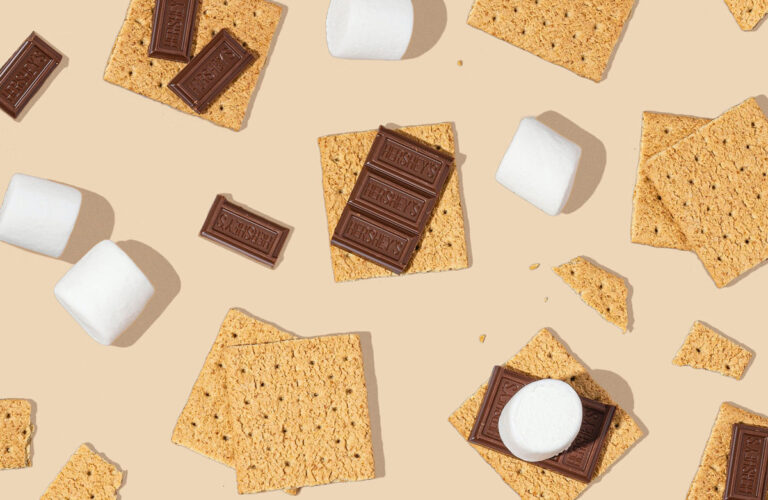Graham crackers were invented to combat coffee, alcohol, and masturbation
Let me take you back—long before the concept of s’mores around a campfire; before the delicate crust of a Key lime pie, there lived a man named Sylvester Graham. In the 19th century US, that man invented one of the most influential and recognisable snacks of modern US culture. I’m talking, of course, about the Graham cracker. However, the origins of the cracker may be slightly more extreme than you might first imagine—they were actually invented as a form of relief from coffee, alcohol and masturbation. Yes, you read that right… Let me explain.
The surprising origins of the Graham cracker
Graham ran health retreats in the 1830s, promoting a bland diet that banned sugar and meat. His views were somewhat revolutionary at the time: a report by Refinery29 stated that Graham’s views planted the seed of veganism in America. But it went further than sugar, he actively refrained himself from life’s simple pleasures: caffeine, tea, spices, seasoning, butter—you name it, he wasn’t having it.
In fact, he even went as far to say that coffee and tea were just as bad as tobacco, opium and alcohol because they created a “demand for stimulation.” To be honest, he’s true to some degree; especially when reflecting on my crippling caffeine addiction. Above all, however, the vice Graham had which really took the biscuit was overeating. He once wrote, “a drunkard sometimes reaches old age; a glutton never,” which isn’t exactly true but even if it was, I’d rather die young eating cake than die old eating crackers…
Graham’s austere philosophy was moulded by his underlying belief that eating habits can influence behaviour, and behaviour can influence eating habits. He believed certain foods were “overstimulating” and led to impure thoughts and passions—including masturbation (or as he called it, “self-pollution”), which he believed caused blindness and insanity. I bet he was fun at parties.
Regardless of his questionable views on masturbation, we can thank Graham for his profound influence on victorian-era food: an age known for its bright and colourful cuisine—and not at all the exploitation of child labour, imperialism and low life expectancy. That was sarcasm.
His philosophy inspired John Harvey Kellogg, who was born just a year after Graham died; does his name ring a bell? Kellogg could’ve practically been a reincarnation of Graham himself—sharing the same miserable outlook on life: believing meat and flavourful foods led to sexual impulses. Ah, now the cornflake—possibly the blandest cereal of them all—makes much more sense.
What exactly could Graham’s followers eat?
In one lecture, Graham told young men they could stop their minds from wandering to “forbidden places” (god forbid…) if they “undue excitement of the brain and stomach and intestines.” So what exactly could his loyal followers eat? Why the core components of the graham cracker, of course.
Graham’s diet was bread made of coarsely ground wheat or rye, a stark contrast to the white flour loaves sold at the local bakeries. Emerging from the same flour came crackers and muffins, commonly served as breakfast foods. And just like that, the infamous Graham cracker was born.
The connection between cornflakes and the Graham cracker
It’s said that Kellogg’s idea of the breakfast cereal came from these same breakfast foods, only to avoid major dry mouth akin to a bong-rip in the desert, he combined the cracker with milk… Genius. Little did he know at the time, Kellogg had just laid the bedrock to the concept of breakfast cereal. Kellogg was one of the few remaining fans of Graham’s diet, a trend that fizzled out in the 1840s just as fast as millennials’ beloved skinny jeans did last year. In the 1880s, The National Biscuit Company adapted the Graham cracker—adding sugar and other ingredients Graham himself believed caused “self-pollution”—and forming the loveable, staple (and edible) cracker we know today. Graham would be rolling in his grave.
So next time you tuck into your next s’more, remember the rich and absurd story of how the Graham cracker came to be… Just food for thought.






